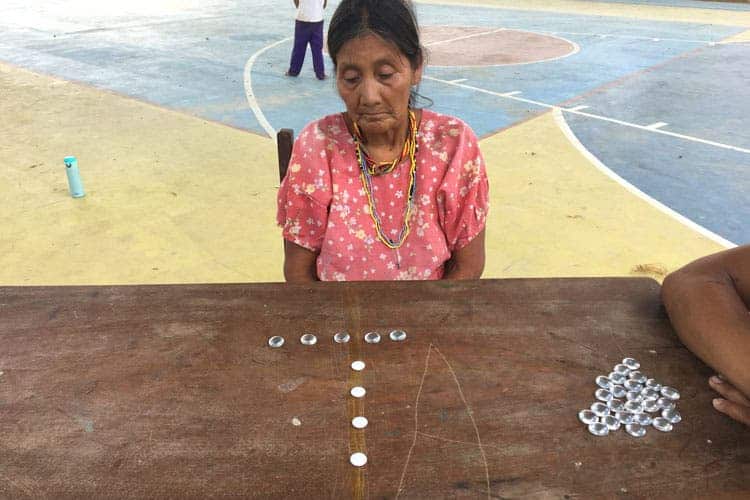
Humans seem to have an innate system for thinking about and organizing numbers, and some scholars have proposed in the past that our brains probably have a built-in mechanism for counting. Such a mechanism would be distinct from language, so humans and other animals would be able to count without having to require language and words such as “one”, “two”, and so on. But that may be only partially true.
A new study suggests that language plays an integral part in shaping our mathematical thinking, as evidenced by members of Bolivia’s Indigenous Tsimane’ community. In this culture, people couldn’t count beyond the “number words” they knew.
“Our finding provides the clearest evidence to date that number words play an active role in people’s ability to represent exact quantities and supports the broader claim that language can enable new conceptual abilities,” said study lead author Benjamin Pitt, a postdoctoral fellow in UC Berkeley’s Computation and Language Lab.
Language drives mathematical reasoning, and not the other way around
Pitt traveled deep into the Amazon basin of Bolivia, using a Jeep, canoe, and finally some hiking to reach the remote villages of the Tsimane’ people. With the help of Tsimane’-Spanish interpreters, the researcher recruited 30 community members with little formal schooling for an experiment.
Each participant was shown a group of objects, such as four buttons, and asked to replicate what they saw using different objects like glass beads. Quite surprisingly, the participants could only match the exact number of objects only in instances when they knew the corresponding words for the numbers.
During a previous trip to the Amazon, Pitt and colleagues studied the organization of numerical information among the Tsimane’ people. Unlike children and adults in industrialized countries, who organize time and numbers or measure things from left to right, the Tsimane’ people organize them freely in either direction.
In this experiment, indigenous members received a set of five cards, where each card displayed a different number of dots. A card containing five dots was placed in the middle of a strip of Velcro, and the participants had to arrange their cards on either side of the middle card, according to their numerical value. The Tsimane’ participants were just as likely to organize the cards from left to right as they were from left to right. The same happened with cards representing fruit ripening over time, a measure of organizing size and time.
“Abstract concepts are things we cannot see or hear or touch, like time, for example. You can’t see time. You can’t touch it. The same goes for numbers. We think and talk about time and numbers constantly. But they’re abstract. So how do we make sense of them? One answer is that we use space to make them tangible — thinking of them along a line from left to right or from top to bottom. My research looks at the root of these types of concepts by studying how they vary across cultures, age groups and even across individuals within a group,” Pitt said.
Although it might sound impossible to Western people, there are to this day some cultures across the world which do not have words for numbers. These languages which do not contain words for numbers in their lexicon are known as anumeric. A prime example constitutes the Pirahã people of Brazil, which have no words for any exact number — not even the number “1”. Their language contains just three imprecise words for quantities: Hòi means “small size or amount,” hoì, means “somewhat larger amount,” and baàgiso indicates to “cause to come together, or many.”
As a result, Pirahã people have great difficulties consistently performing simple mathematical tasks. For example, one test involved 14 adults in one village that were presented with lines of spools of thread and were asked to create a matching line of empty rubber balloons. The people were not able to do the one-to-one correspondence when the numbers were greater than two or three.
Are Pirahã adults less resourceful and intelligent than a four-year-old American toddler, for whom such a task is trivial? Of course not. In another experiment, when researchers at the University of Miami introduced numerical words, the indigenous people’s performance for mathematical tasks dramatically improved. These findings showed that language is key to mathematical reasoning.
The Tsimane’ study further strengthens this notion, and completes the jigsaw puzzle with new pieces. Unlike American or Pirahã adults, Tsimane’ adults vary greatly from one another in their ability to count. Some can count indefinitely, while others aren’t sure what follows after, say, the number 6 and can only approximate.
“We used a novel data-analysis model to quantify the point at which participants switched from exact to approximate number representations during a simple numerical matching task. The results show that these behavioral switch points were bounded by participants’ verbal count ranges; their representations of exact cardinalities were limited to the number words they knew. Beyond that range, they resorted to numerical approximation. These results resolve competing accounts of previous findings and provide unambiguous evidence that large exact number concepts are enabled by language,” Pitt and colleagues wrote in their study.


